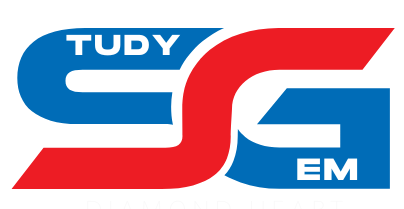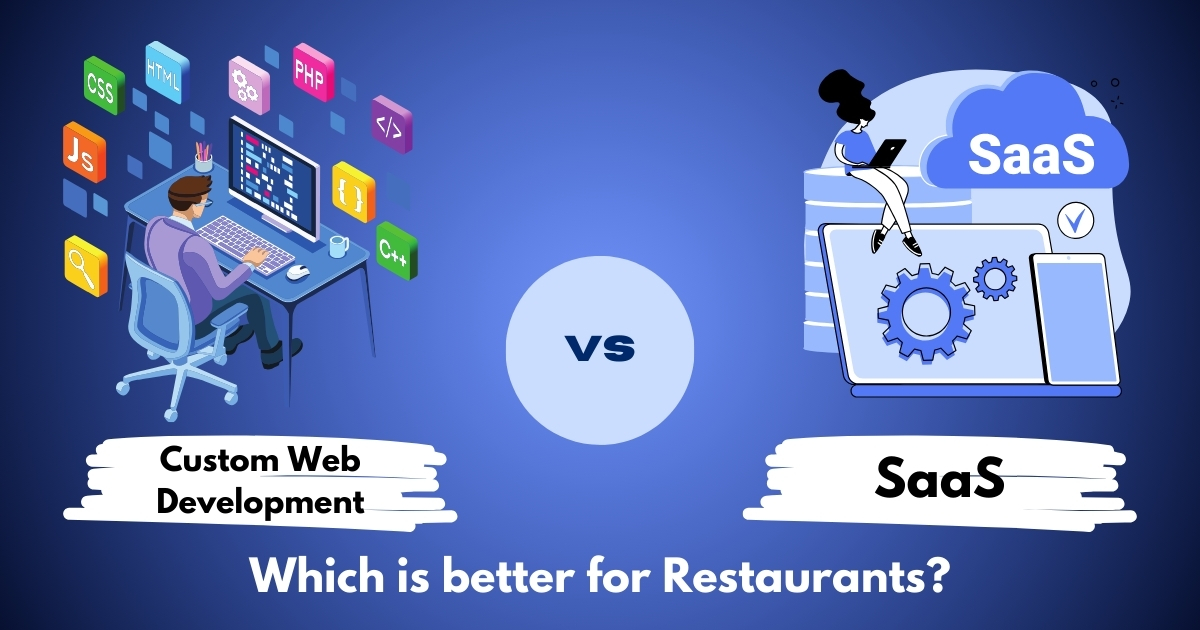Technology is changing how restaurants operate. From online orders to digital reservations, businesses are using modern solutions to stay competitive. A strong online presence is now essential for attracting and retaining customers.
For restaurant owners, choosing the right digital solution is a major decision. Should you invest in custom web development or opt for a SaaS (Software as a Service) platform? Both options have benefits and limitations, but the right choice depends on your business needs, budget, and long-term goals.
This guide will compare custom web development and SaaS solutions for restaurants, helping you determine which is the better option.
Understanding Custom Web Development
Custom web development involves building a website or application from the ground up. This solution is designed specifically for a restaurant’s unique needs, ensuring complete control over features, branding, and functionality.
How Custom Web Development Works
Custom development requires a team of web developers who design and build the platform using programming languages and frameworks like React, Laravel, or Node.js. The process includes:
- Requirement analysis to understand the restaurant’s business model, goals, and digital needs.
- Design and development of a visually appealing and fully functional website.
- Integration of essential tools like POS systems, online ordering, table reservations, and loyalty programs.
- Testing and deployment to ensure everything runs smoothly before launching the website.
- Ongoing maintenance and updates to improve performance and fix potential issues.
Key Features of Custom Web Development for Restaurants
A custom-built platform provides flexibility and can include:
- A unique design that reflects the restaurant’s branding and identity.
- A personalized customer experience with AI-driven recommendations and tailored menus.
- Seamless integration with in-house point-of-sale systems, food delivery apps, and reservation tools.
- Optimized performance with fast loading speeds, smooth navigation, and mobile-friendly design.
- Scalability that allows businesses to add new features as they grow.
Advantages of Custom Web Development
- Provides full control over design, functionality, and future upgrades.
- Helps restaurants stand out with a unique brand identity.
- Allows better data security and ownership of customer information.
- Eliminates recurring subscription fees, making it cost-effective in the long run.
Challenges of Custom Web Development
- Requires a higher initial investment compared to SaaS solutions.
- Takes longer to develop and deploy, which may delay online operations.
- Needs continuous maintenance and technical support to keep the platform up to date.
Understanding SaaS (Software as a Service) Solutions
SaaS platforms offer ready-to-use digital solutions for restaurants. These platforms operate on a subscription model, providing essential features without the need for custom development. They are cloud-based, meaning businesses can access them from anywhere without worrying about hosting or maintenance.
How SaaS Works
SaaS providers develop and maintain restaurant-specific platforms that businesses can use with minimal setup. The process includes:
- Choosing a subscription plan based on business size and requirements.
- Selecting a pre-built template that aligns with the restaurant’s branding.
- Configuring basic settings, including menu uploads, payment gateways, and delivery integrations.
- Launching the website or application within a short time frame.
- Receiving automatic updates, security patches, and new feature rollouts from the provider.
Key Features of SaaS for Restaurants
- Pre-designed templates that allow quick deployment without coding.
- Built-in integrations with food delivery services, online payment systems, and marketing tools.
- Cloud hosting, which eliminates the need for businesses to manage servers.
- Automatic software updates and security enhancements without additional costs.
- A subscription-based pricing model with different plans based on features and business size.
Advantages of SaaS for Restaurants
- Requires a lower upfront cost, making it budget-friendly for small businesses.
- Allows quick setup, enabling restaurants to launch their digital presence within days.
- Includes built-in support, eliminating the need for a dedicated technical team.
- Provides automatic updates and security patches, ensuring system reliability.
Challenges of SaaS for Restaurants
- Offers limited customization, which may restrict branding and unique features.
- Charges recurring subscription fees, increasing long-term expenses.
- Stores data on third-party servers, which may limit control over customer information.
- Has scalability restrictions, making it difficult to expand beyond the platform’s capabilities.
Key Differences Between Custom Web Development and SaaS
Choosing between custom web development and a SaaS solution depends on several critical factors. Each option impacts cost, flexibility, branding, and long-term business growth. A deeper understanding of these differences can help restaurant owners make an informed decision.
Cost and Investment
Custom Web Development: Requires a significant upfront investment. Costs include design, development, domain registration, hosting, and security measures. However, there are no recurring monthly or annual fees, making it a cost-effective solution in the long run. The only additional expenses involve periodic maintenance and future upgrades.
SaaS: Operates on a subscription model with lower initial costs. Most platforms offer tiered pricing, where advanced features require higher-tier plans. While this model is budget-friendly in the beginning, costs can increase over time as businesses scale and require additional services. Some SaaS providers also charge transaction fees for online orders, which can further impact profitability.
Customization and Branding
Custom Web Development: Provides complete freedom over the website’s design, features, and user experience. Restaurants can create a fully branded platform with unique visual elements, personalized menus, and custom ordering systems. This level of customization allows restaurants to stand out from competitors and maintain a strong brand identity.
SaaS: Offers limited customization, as most platforms come with predefined templates and fixed layouts. While some providers allow basic design modifications, deep customization is not possible. This can result in a generic-looking website that lacks originality. Restaurants that want to create a unique customer experience may find SaaS solutions too restrictive.
Scalability and Flexibility
Custom Web Development: Scales effortlessly as the business grows. Restaurants can add new features, integrate advanced AI-driven tools, and expand their platform without limitations. Whether launching a mobile app, integrating loyalty programs, or automating reservations, custom-built websites support long-term expansion.
SaaS: Comes with built-in scalability but within predefined limits. While upgrading to a higher-tier plan may unlock new features, businesses must operate within the platform’s framework. Some SaaS solutions restrict API integrations or advanced functionalities, making it challenging for rapidly growing restaurants to adapt.
Maintenance and Updates
Custom Web Development: Requires dedicated maintenance to ensure smooth operation. Businesses need to update software, fix bugs, and implement security patches regularly. This can be managed in-house or outsourced to a web development team. While this requires additional effort, it allows restaurants to control updates based on their specific needs.
SaaS: Handles all maintenance and updates automatically. The provider ensures that the platform stays secure, bug-free, and optimized. This hands-off approach eliminates the need for technical expertise, making it ideal for restaurant owners who prefer a hassle-free solution. However, updates are managed by the provider, meaning businesses have no control over when or how changes are made.
Security and Data Ownership
Custom Web Development: Gives restaurant owners full control over security settings and customer data. Businesses can implement custom encryption, access restrictions, and compliance measures to protect user information. Since all data is stored on private servers, there are no risks of third-party access.
SaaS: Stores all customer data on third-party servers. While reputable providers follow strict security protocols, businesses must rely on external policies. Some platforms also use customer data for analytics, which may raise privacy concerns. Limited access to raw data can also make it difficult for restaurants to run personalized marketing campaigns or customer retention strategies.
Which is Better for Restaurants? (Use Case Scenarios)
The right choice depends on the restaurant’s size, goals, and long-term vision. Some businesses need a fully customized platform, while others benefit from a ready-to-use SaaS solution.
When to Choose Custom Web Development
- Unique Brand Identity: A restaurant that wants a fully customized digital experience with a distinct design and features.
- Advanced Features and Integrations: Businesses that need deep integrations with custom POS systems, AI-driven recommendations, and automated marketing tools.
- Full Data Control: Restaurants that prioritize customer data security and want complete ownership of their digital platform.
- Scalability for Growth: Businesses planning to expand, add new features, or develop a long-term digital strategy.
- One-Time Investment: Owners willing to invest upfront for a platform that eliminates recurring subscription fees.
When to Choose SaaS
- Budget Constraints: Small restaurants or startups that need an affordable digital solution with minimal upfront investment.
- Quick Deployment: Businesses that want to launch their online presence without waiting for custom development.
- No Technical Expertise Required: Restaurants that prefer a system with built-in support and automatic updates.
- Low Maintenance Needs: Businesses that do not want to manage hosting, security, or software updates.
- Subscription-Based Model: Owners who prefer predictable monthly costs over a one-time investment.
Each restaurant has different needs. A small local café may benefit from an easy-to-use SaaS platform, while a growing restaurant chain may require a custom-built solution for long-term scalability.
Conclusion: Making the Right Choice
Both custom web development and SaaS solutions provide valuable benefits for restaurants, but the right choice depends on business goals and long-term needs. Custom web development offers full control over branding, features, and data security. It is ideal for restaurants that need a unique digital experience, deep integrations, and scalability. Although the initial investment is higher, it eliminates recurring subscription costs and provides complete ownership of the platform.
SaaS solutions are a cost-effective and convenient option for restaurants that need a quick and hassle-free digital presence. They come with built-in features, automatic updates, and minimal maintenance, making them ideal for small businesses or startups. However, limitations in customization, data ownership, and scalability can be a concern for growing restaurants. Business owners should carefully assess their specific needs to choose the right solution for long-term success.




